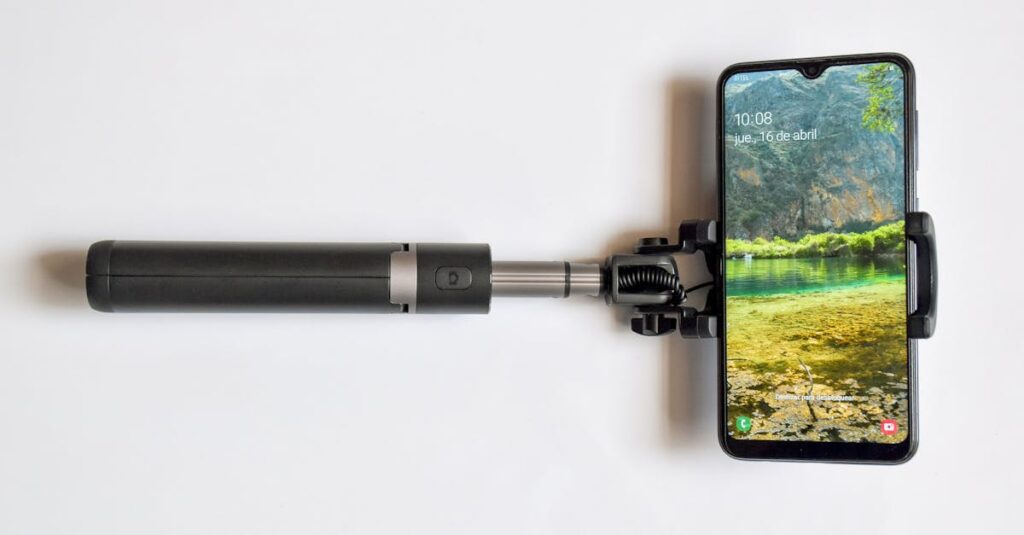Table of Contents
ToggleIn a world where keys are becoming as outdated as flip phones, smart locks have entered the scene like the superhero we never knew we needed. But before you rush to replace every lock in your home, there’s a crucial question to ponder: is your smart lock compatible with your existing setup? Spoiler alert: not all smart locks play nice with every door.
Overview of Smart Locks Compatibility
Smart locks vary widely in compatibility with different door types and existing hardware. Many models cater to standard single-cylinder deadbolts, fitting most residential doors. Modern smart locks often require specific door thicknesses, ranging from 1.375 inches to 2 inches, so measuring the door is essential.
Some smart locks function with existing key systems, allowing users to keep their traditional keys while enjoying the benefits of smart technology. Other systems utilize keyless entry options, which provide convenience and enhanced security but often necessitate complete hardware replacement.
Installation requirements also differ between brands. Certain smart locks feature wireless connectivity, needing a stable Wi-Fi connection or nearby Bluetooth-enabled devices. In contrast, others operate through independent batteries, which can affect overall performance.
Compatibility extends to integration with smart home ecosystems. Popular platforms like Amazon Alexa, Google Assistant, and Apple HomeKit support various smart locks. Checking for compatibility with these systems can enhance automation and remote control features.
For optimal performance, ensure that the chosen smart lock supports security standards such as Z-Wave or Zigbee. This adherence guarantees that the device functions smoothly with smart home hubs, promoting seamless operation.
Reviewing customer feedback can provide insights into specific compatibility issues encountered in the field. Users often share their experiences installing smart locks in diverse door types, from wooden doors to metal frames, helping potential buyers assess fit and performance.
Factors Affecting Compatibility
Compatibility with smart locks hinges on several key factors that impact their functionality and effectiveness. Understanding these factors ensures optimal use of smart locks.
Operating Systems
Operating systems influence smart lock management and integration. Many smart locks operate seamlessly with iOS and Android systems, allowing users to control locks via mobile apps. Certain locks exclusively support one operating system, limiting cross-platform usage. Those integrating with home automation solutions typically require compatibility with specific systems. Some smart locks are accessible through proprietary software, which may restrict interaction with third-party applications. Before purchase, it’s crucial to review the listed operating systems supported by each lock.
Connectivity Protocols
Connectivity protocols play a significant role in smart lock operation. Most smart locks employ Wi-Fi, Bluetooth, or Z-Wave technologies for communication. Wi-Fi enables remote access and monitoring from anywhere, appealing for users prioritizing control. Bluetooth often focuses on proximity access, making it ideal for hands-free entry. Z-Wave and Zigbee facilitate connections within broader smart home networks, ensuring compatibility with various devices. Evaluating the connectivity protocol enhances smart lock selection, especially when integrating into existing smart home systems.
Popular Smart Locks and Their Compatibility
Smart locks come in various models, each offering unique features and compatibility requirements. Understanding these differences helps in selecting the best option for specific door types.
August Smart Lock
August Smart Lock is compatible with most standard deadbolts, making it versatile for many existing setups. This device allows for easy keyless entry, connecting seamlessly via Bluetooth to smartphones. It also supports integrations with smart home systems like Amazon Alexa and Google Assistant, enhancing user convenience. Users can install this lock with minimal tools, ensuring a straightforward setup. With a removable design, this lock preserves existing hardware, allowing users to retain traditional key functionality as needed.
Schlage Encode
Schlage Encode offers built-in Wi-Fi, eliminating the need for additional hubs for connectivity. This lock provides compatibility with most single-cylinder deadbolts, making it a reliable choice for various door types. Users can control access through the Schlage Home app, offering remote locking and unlocking functionalities. The device supports voice commands with Amazon Alexa, enhancing smart home integration. Security features include customizable access codes and a durable design, ensuring longevity and ease of use. Automated updates allow the lock to remain secure without requiring manual intervention.
Benefits of Ensuring Compatibility
Ensuring compatibility among smart locks enhances user experience. Successful integration with existing door hardware increases convenience and eliminates installation hassles. Many smart locks cater specifically to standard single-cylinder deadbolts, making selection easier for homeowners.
Security standards play a pivotal role in compatibility. Adhering to protocols like Z-Wave or Zigbee bolsters the performance of smart home systems. Integrating smart locks with established platforms such as Amazon Alexa and Google Assistant allows for seamless control.
Improved functionality emerges when smart locks align with mobile operating systems. Most locks accommodate both iOS and Android users, but not all follow this trend. Choosing a lock that supports multiple platforms broadens accessibility and user options.
Investing in compatible smart locks ultimately saves money. Avoiding incompatible models reduces the need for additional hardware purchases or modifications. Reviews from customers provide valuable insights into compatibility experiences across various door types, aiding informed decisions.
Flexibility in design and features often dictates compatibility as well. Smart locks like the August Smart Lock and Schlage Encode illustrate diverse options. Both models adapt easily to various existing setups while maintaining advanced functionality.
Enhanced security emerges when users select compatible products. Customizable access codes and remote access functionalities increase safety through user control. Compatibility fosters confidence in the smart lock’s ability to meet specific user needs and integrate smoothly into existing environments.
Challenges in Smart Locks Compatibility
Compatibility challenges emerge in various aspects when considering smart locks. A key issue involves door fit specifications. Dimensions for doors can vary significantly, and not every smart lock accommodates these differences. Standard single-cylinder deadbolts often serve as a common reference, yet exceptions exist.
Connectivity protocols present another hurdle. Smart locks utilize technologies such as Wi-Fi, Bluetooth, Z-Wave, and Zigbee. Certain models may not support all these protocols, limiting integration possibilities within smart home ecosystems. Devices that favor specific operating systems might also create barriers, as some smart locks only support iOS or Android, impacting user accessibility.
User experience suffers when installation requirements are overlooked. Smart locks often demand stable internet connections or specific app installations for full functionality. Reviewing requirements before purchasing helps avoid complications.
Furthermore, keyless entry models present their own concerns. While some smart locks can incorporate existing key systems, others require complete hardware replacement. Understanding what each model offers is crucial to making informed decisions.
Security standards contribute to compatibility challenges as well. Adhering to protocols like Z-Wave or Zigbee ensures better performance and reliability. Devices that do not follow these specifications may face functionality issues.
Gaining insights from customer experiences can prove beneficial. Feedback often reveals compatibility problems with particular door types or smart home integrations. Reading reviews aids consumers in selecting compatible options.
Prioritizing compatibility simplifies the smart lock selection process. The interplay of factors such as door specifications, connectivity protocols, installation requirements, and security standards ultimately shapes the user experience. Hence, thorough research and consideration ensure better alignment with specific needs.
Smart locks offer a modern solution for home security but compatibility is key. Understanding the specific requirements of your door and the smart lock’s features can significantly enhance your experience. By considering factors like door thickness connectivity protocols and integration with smart home systems users can make informed decisions.
Prioritizing compatibility not only streamlines the selection process but also ensures optimal performance and convenience. As technology evolves continuing to research and review customer feedback will empower users to choose the best smart lock for their needs. Embracing this innovative technology can lead to a more secure and efficient home environment.







